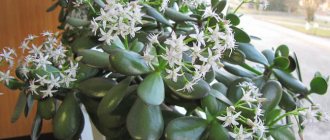Greenery in a flowerbed is good, but flowers on it are even better. Some gardeners wonder why the peony does not bloom if everything seems to be done correctly. There are 7 reasons for this unfavorable phenomenon. They lie in the wrong location or planting technology. At the same time, due to frequent transplants, large divisions and lack of moisture or potassium, the crop may also stop blooming. Therefore, the gardener needs to carefully analyze all these and other points.
General information about how peony develops and blooms
Peony is a perennial shrub. In herbaceous crop species, the above-ground part dies off every year during the winter and resumes the growing season with the arrival of spring, while in tree-like crops it is preserved for the winter. The plant has a powerful root system, deepening up to 1 m. Thanks to this, the shrub is able to provide itself with moisture even during periods of drought, and withstand frosts down to -35 degrees.
Only healthy peony bushes can bloom profusely.
Regeneration buds form in the upper part of the root of peonies. They have a two-year life cycle. The formation of new buds occurs annually at the end of flowering. It is thanks to them that the plant grows new shoots and forms buds every year.
Peonies bloom in the second half of May or June, depending on the type and variety. The plant forms apical buds. Flowering duration is 10-14 days. At the end, fruits are formed in which the seeds ripen. Closer to autumn, the above-ground part of herbaceous plant species begins to fade, and the growth of new shoots begins only next spring.
Important! After planting, the peony seedling should bloom in the third year, and before that it is actively growing its root system.
Foliar feeding
What can you do to admire amazing bouquets of peonies throughout the season? Apply foliar feeding with Ideal. Dilute according to instructions and spray the leaves with a nutrient solution. To ensure that the fertilizer adheres well to the leaves, rub a little laundry soap into it.
Feeding schedule with other drugs:
- As soon as the first above-ground parts of the bush appear, they are watered with a urea solution (50 g per 10 liters of water).
- A month later, fertilization should be repeated: add 1 tablet of microfertilizer per 10 liters of solution to the urea solution.
- The third feeding is carried out after flowering. Watering is carried out with a solution of microfertilizers (2 tablets per bucket of water).
The main mistakes when planting, leading to poor development and how to fix it
Sometimes the reason why a peony does not bloom at all on time may be due to improper planting. This is very important for this culture. Therefore, you should understand the possible options for mistakes made.
Inappropriate location selected
Why don't violets bloom - how to make them bloom?
For the full development of the bush and abundant flowering, you need to choose a suitable place. This culture prefers to grow in open sunny places, protected from drafts. In this case, it is necessary that the duration of daylight hours be at least 6-7 hours, especially during the period of bud formation. When placing a peony in the shade, the shrub actively grows shoots and foliage, but blooms poorly or does not form buds at all.
Important! You can plant peonies under the canopy of trees, but they should not block the light.
Before planting, you should also determine the acidity level of the soil. For peony, the optimal pH is 6.5. Exceeding this indicator is one of the reasons why peony does not grow or bloom. Therefore, experienced gardeners recommend determining acidity in advance. This will allow you to correct the situation in time. To do this, you will need to add lime to the planting hole and carefully move it with the soil. After this, the peony can be planted after six months.
The reason for the lack of flowering may be an increased pH level
Incorrect landing
A peony may stop blooming even if the cuttings are not deepened correctly during planting.
- If the root is located too close to the soil surface, the restoration buds freeze in winter and suffer from lack of moisture in the warm season.
- And deep planting leads to the fact that only a few buds may bloom or there is no flowering at all.
There are also situations when the landing was initially carried out correctly. But when covering a shrub in the fall, its root system is regularly sprinkled with a thick layer of peat or humus. And in the spring it is not completely removed. And after a few years, its root deepens significantly.
Careful weeding can also cause the bush to stop blooming. In this case, its roots are gradually exposed.
Attention! The optimal level for a peony is considered to be when the distance from the topmost bud to the soil surface is 3-5 cm when planting in heavy soil, and 5-7 cm in light soil.
To make a shrub bloom in this case, you just need to dig it up and plant it taking into account the requirements of the crop.
Frequent transplantation
The peculiarity of peonies is that the plant, first of all, after planting, directs all its forces to the development of the root system. This takes 2 years.
Therefore, during this period the bush not only does not bloom, but also weakly grows shoots. Its first flowering occurs only in the 3rd year. Therefore, frequent replanting may be one of the reasons that the bush does not form buds.
Important! Only mature bushes that are at least 5 years old can be replanted.
Autumn transplant
If you plan to replant flowers, then do it in the fall. As soon as the heat subsides, start replanting, otherwise the seedlings will not have time to gain strength for wintering. Before the transplantation procedure, the bush must be cut off, leaving shoots 9-10 cm high.
How to replant so as not to damage the thin root shoots:
- First you need to dig up the bush.
- Place a pitchfork under it and pull it out along with the earth.
- Wash the root shoots and trim off the rotten areas.
- Disinfect tubers. Treat the tubers with potassium permanganate, 2-3 grams per bucket of water.
- Keep the bush in the shade for 6 hours, then start dividing.
- Prepare a hole for planting, up to 50-55 cm deep, into which pour a mixture of garden soil, peat, humus and sand, mixed in equal proportions.
Errors in care and how to correct them
Diseases of dahlias - what they are, why they grow poorly and do not bloom
A provoking factor as to why garden peonies do not produce buds may also be improper care. In this case, you need to determine the root cause in order to eliminate it.
Bush flooding
This crop cannot tolerate prolonged stagnation of moisture in the soil, so it cannot be grown on clay soil without first adding sand and peat. Overmoistening can be detected by the dark border on the leaves, which indicates the development of root rot in the peony. The groundwater level should also be taken into account. It must be at least 1.5 m.
Excessive or insufficient watering can harm a peony.
Watering too frequently can also cause moisture stagnation. Peonies are among the plants that are able to independently provide themselves with moisture even during dry periods. Therefore, humidification should be carried out only during a long absence of rain. In this case, watering should be 2-3 times a week, soaking the soil by 20 cm.
Flooding of a bush may be due to its placement in an area where melt water stagnates. Therefore, experienced gardeners recommend planting shrubs on a hill.
Excess or lack of fertilizers in the soil
Peony buds may not bloom as a result of improper feeding. Each stage of shrub development requires certain nutrients.
- In spring, during the period of active growth of shoots and foliage, the plant needs nitrogen. Therefore, at this stage it is necessary to use organic matter or mineral fertilizers with a high content (urea, ammonium nitrate).
- And at the moment the buds form and when they begin to open, the peony needs phosphorus and potassium. These components are responsible for the color intensity, flower size and frost resistance.
Important! With excessive application of nitrogen and lack of potassium, the peony actively increases green mass to the detriment of flowering.
To correct the situation, it is necessary to adjust the feeding. This means that you need to stop using nitrogen fertilizers during the period of bud formation, and switch purely to phosphorus-potassium mixtures or wood ash.
Pruning rules not followed
After flowering ends, the life cycle of the shrub continues. During this period, the peony restores the energy spent on the formation of buds, prepares for the upcoming winter and lays new buds for restoration. Therefore, leaves play an important role, as they provide the plant with additional nutrition.
It is impossible to cut off the above-ground part of the peony ahead of time.
If you prune the shoots early, this will significantly weaken the bush, and it may stop blooming the next year. Therefore, experts recommend not removing leaves and stems until they wilt. And even when cutting peonies into a bouquet, you need to leave at least 2-3 plates at the bottom.
Important! It is necessary to cut off the above-ground part of peonies only when autumn frosts occur, and in herbaceous species completely, and in tree-like ones - by 1/3.
Launching the root system
Despite the fact that a peony can grow in one place for 50 years, it needs periodic replanting. This is due to the fact that over time there is a gradual destruction of the main root. As a result, several small bushes are formed around.
If they are not divided in a timely manner and the rotted shoot is not removed, the bush will consist of many weakened shoots that will never bloom.
Reproduction methods
If you are thinking about how to start propagating peonies, namely the Bartzella variety, you need to divide the bushes.
There is a certain time in which individual parts will be able to adapt from the main bush. For peonies this is the end of April and the beginning of May. If the opportunity arose only in the summer, work should be carried out in late August and early September.
Of course, this work can be complicated by a number of unpleasant factors that will seem problematic for beginners in flower breeding. Some of the roots cannot be cut with a knife.
In this case, you will have to use a saw. That is why it is better for novice gardeners to avoid this method of propagation, so as not to completely spoil the flowers.
In addition, the division process is best done with flowers that have been growing for more than three years. In this case, they have a sufficiently strengthened root system that can withstand this operation.
In order to remove peonies without damaging the root system, you should first water the ground well. After this, all soil is shaken off the roots.
Medium roots are divided into two parts, larger ones into three. You need to make sure that each part of the roots has eyes that will produce additional branches.
After cutting and dividing the roots, they are sprinkled quite tightly with charcoal and dried in a dark place.
Of course, you can use the cutting method, but there is a high probability that the plant simply will not take root. That is why, when propagating the Ito-hybrid Bartzell peony, they use division of the root system.
Features of the plant
The lack of flowering in peonies may also be due to the age of the bush. Therefore, in some cases this may be one of the reasons.
Too young bush
White peonies - description and characteristics of the best varieties with a colored center
If you plant a tree that is too small, you will have to wait a long time for the first flowering. The peculiarity of peony is that with an insufficiently developed root system, the shrub does not grow shoots and buds.
In this case, you need to be patient and provide the plant with proper care. In gratitude for this, the grown peony will delight you with its lush flowering.
Too old
With age, the shrub has the ability to become obsolete. In this case, the peony flowers are significantly reduced in size, their number is reduced or they are completely absent. All these signs indicate the need to divide the bush.
To do this, you need to dig up the plant at the end of August, shake off the soil from the roots and wash it thoroughly. Then put it in a shaded place for 2 hours, which will allow you to divide the root without much difficulty.
At the end of the time, using a sharp knife, you need to cut the bush into several parts. Each of them should have 3-5 recovery buds and the same number of well-developed root shoots. After this, the divisions need to be planted in a permanent place.
Attention! All types of division and pruning must be performed with a sharp, disinfected instrument.
When to expect peonies to bloom
To ensure that peonies bloom all summer, experienced flower growers plant different varieties. In what month does this flower begin to bloom? The earliest varieties delight with flowering already in mid-May. This process continues from May until the first ten days of June. These are the varieties:
- Offcinalis capena alba, rosea or rubra;
- Karina; Flame;
- Maryin root.
Behind them, from about mid-June, other varieties bloom:
- Francois Ortega,
- Maxim's Festival,
- Edulis,
- White Sail,
- Monsieur Jules Ely.
How long do they bloom? Approximately from June 16 to June 27.
Flower lovers also liked the following varieties:
- Clemenceau,
- Varenka,
- Felix,
- Sir Thomas Lipton
- Kansas,
- Mont Blanc,
- Cruiser Aurora,
- Princess Margaret.
Behind them, the late and latest varieties begin to smell fragrant. Their flowering period is from June 25 to July 8. This:
- Anchatress,
- Moonglow,
- Edlund,
- Victory,
- Graziella,
- Philippe Rivoire,
- Snowball.
External factors
Sometimes the buds on a peony remain unopened as a result of weather conditions. In such a situation, the gardener is unlikely to be able to do anything to correct the problem. Therefore, it is necessary to select zoned varieties that will be less susceptible to unfavorable factors.
Rainy weather during budding
Prolonged rains can cause the petals in the buds to begin to rot. Therefore, the plant will never be able to dissolve them. But this will not affect flowering in the next season. Therefore, we just have to be patient and hope that next time the rain won’t interfere.
High humidity causes buds to rot
The weather is too dry
Lack of moisture in the soil can also provoke premature wilting of buds. In this case, you need to increase watering of the bush. To do this, use settled water at a temperature of +20 degrees. Watering is carried out every other day, wetting the soil to 20 cm.
Also at this time, sprinkling should be applied in the evening to replenish evaporated moisture in the leaves. And to prevent overheating of the roots, you should mulch the soil under the bush with peat or humus.
History of the variety
In China, peonies have been treated with special reverence since ancient times. Various potions have long been prepared from them and mystical properties were attributed to the plant. It was believed that it could protect against the influence of dark forces.
A peony with such an unusual color was bred by Japanese breeder Toichi Ito in 1948. The father plant was the variety Kinko, and the milky-flowering Kakoden became the mother plant. As a result, he managed to get six plants with a yellow color. But Toichi Ito did not have time to finish the work of breeding new hybrids. Only after his death did the peonies produce magnificent flowers. The scientist’s widow and his assistant breeder Andersen, who was only 22 years old at that time, successfully completed the work they had started. In 1974, the Bartzell peony was brought into cultivation. In 2002, he gained worldwide recognition, receiving the Grand Prix at the International Exhibition.
Diseases and pests
The reason for the lack of flowering may be damage to the bushes by fungal diseases and pests.
Possible problems:
- Ants. These insects attack bushes during the formation of buds, which leads to their deformation. To deter them, it is recommended to spray peonies with garlic solution.
- Slugs. This pest causes damage to shrubs during prolonged rainy weather. Slugs feed on buds and young leaves. As a preventive measure, it is necessary to sprinkle the soil at the base of peonies with tobacco dust or wood ash.
- Root rot. The disease develops with prolonged stagnation of moisture. In this case, the leaves and buds of the bush lose their elasticity. This occurs as a result of metabolic disorders in tissues. To save it, you need to dig up the plant, remove the affected areas and replant it in a new place.
- Powdery mildew. The disease develops at high humidity and temperature. It appears as a white coating on the leaves and buds. For treatment, it is necessary to spray the bush with Skor or Topaz.
Pests can also cause lack of flowering
Knowing why peonies do not bloom, you can determine what to do in each specific case. Therefore, if such a problem arises, you need to familiarize yourself with common mistakes made during planting and further care. Since they are most often the main reasons.
Varietal diversity
Over the years since the appearance of the first varieties of Ito-hybrids of peonies, breeders have developed a large number of their varieties. Each one differs in color, bush size, growing conditions - it’s difficult to choose the best. About 30 varieties are the most popular in Russia. Characteristics of some of them:
- Hillary is a spectacular variety of American selection with semi-double flowers with a diameter of up to 20 cm. The shade is carmine-cherry. The height of the bush reaches 55-60 cm. Feature of the variety: as the bud opens, the color of the flower changes - the stronger the opening, the lighter it is. Therefore, at the same time, inflorescences of different color saturation can be observed on the bush.
- Lollipop is a variety that connoisseurs call a masterpiece. Like Hillary, he appeared in 1999 in the USA. At the beginning of summer it opens with yellow flowers measuring 16-17 cm. The petals have strokes of red and purple shades, which in combination with the same middle of the flower looks very beautiful. Bush height - up to 80 cm.
- Bartzella is a hybrid bred in the USA in the late 90s of the last century. The buds bloom alternately in April-May with double yellow flowers, red in the center, up to 25 cm in size. The bush, almost 90 cm high, does not fade for a long time in the fall, changing the color of the foliage to bronze. Caring for the Bartzell peony, as well as planting it, are not difficult; it can grow in one place for decades. The peculiarity of the variety is that the flowers retain their freshness for a long time after cutting. In 2006, he was awarded a Gold Medal by the American Peony Society.
- Canary Diamonds - with semi-double yellow flowers and carmine strokes in the center. The diameter of the petals reaches 18 cm. The height of the bushes is 65-70 cm.
Seedling preparation
Although this variety is unpretentious, it is necessary to choose and prepare the seedling correctly so that your efforts are not wasted.
How to choose
The choice of planting material depends on the number of renewal buds on it. There should be at least two of them, ideally five, and the same number of roots.
How to prepare
Preparation consists of the following steps:
- Carefully cut off rotten and moldy areas.
- Sprinkle the cuts with ash.
- Disinfect the seedlings in a solution of 5 liters of water with 2 grams of potassium permanganate. This will also serve as prevention.
See also
Causes and treatment of peony diseases, best pest control measuresRead
Reason 5. Peony buds were not removed in a timely manner
You can regulate the decorativeness of your peony bush yourself by cutting off the buds at an early stage of their formation. If you are growing peonies as cut flowers and are interested in producing smaller, but larger, top flowers, the side buds can be removed when they reach the size of a pea.
If you plan to see a peony bush on the site, abundantly and completely covered with flowers, it is not necessary to do this. Just remember that year after year such massive flowering can weaken the plant as a whole, preventing the root system from fully developing. This is especially true in the first couple of years after planting, when it makes sense to sacrifice “extra” buds in anticipation of the future.
But the leaves and stems should not be cut off at the root immediately after the peony has finished flowering - after all, it is the above-ground part of the plant that is responsible for laying buds for future flowering. This procedure is carried out in late autumn. The same applies to cutting peonies for a bouquet - you should not remove more than a third of the total vegetative volume of the bush.
Description
The variety was bred in the 40s of the last century in Japan by scientist Toichi Ito and his student. In honor of the breeder, all peonies bred by him are also called Ito-peonies. The name “Bartzella” comes from the name of the family pastor of the breeder Bart. To create the variety, two peonies were crossed - Kinko and Kakoden. To achieve such an impressive result, the scientist conducted more than 1,200 crossing experiments.
It is interesting that Toichi Ito never completed the work - he died, having managed to produce six viable yellow plants. And his student, with the help of the scientist’s widow, was able to obtain from the resulting material a variety now known as Bartzella. The resulting variety gained fame, recognition, scientific description and became a real hit only in 1974.
The plant is extremely decorative - its huge luxurious yellow flowers are impossible not to notice. This hybrid is one of the most expensive varieties of peonies and can become a real pearl of any gardener. The plant has a gold medal from the American Peony Society.
The Bartzell peony is distinguished by its exquisite petals, the color of which is yellow with a red center (see photo). The petals have a semi-double structure, which makes the plant even more decorative. The diameter of one flower reaches 20 cm. The stem of the plant is dense, strong, and woody in the lower part. The bush does not need support. When cut, the Bartzell peony can last longer than all its fellows.
In fact, the Bartzell peony is a herbaceous perennial that also has the benefits of a tree plant. The bush grows with a regular rounded shape, has dense foliage and a height of about 90 cm. About 60 flowers bloom on one adult bush per season. The flowering period is long, which pleases all gardeners.
The foliage of the plant is also decorative - the leaves have a bright green color and a carved, elegant structure. The variety survives winter well and can withstand frosts down to -30 degrees. And even if some of its parts are frozen, with the onset of warmth the plant is able to recover. The variety has amazing resistance to viral diseases, is unpretentious, can grow even in infertile soil, and withstands drought.











